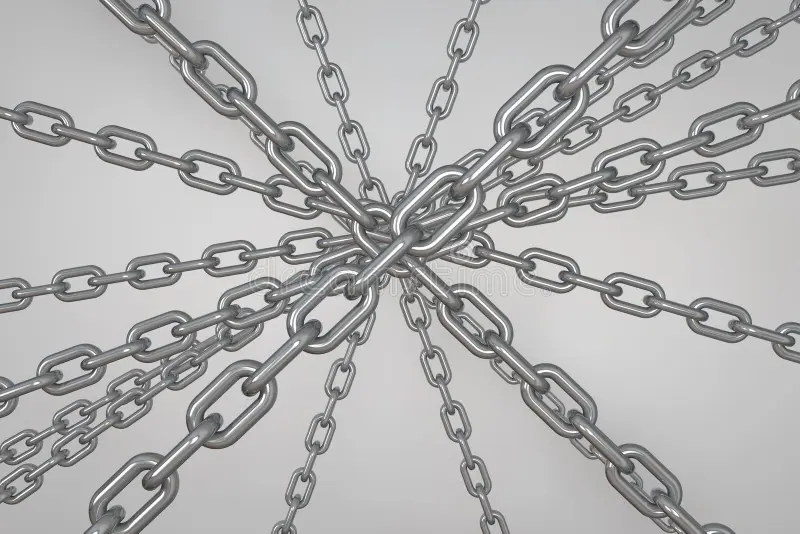
Multichain NFT Art: Why You Should Showcase NFTs from Multiple Blockchains
NFT art has revolutionized digital ownership, but artists and collectors face a major challenge: fragmentation.
Most NFT marketplaces, like OpenSea and Rarible, are limited to specific blockchains, forcing creators to spread their portfolios across multiple platforms.
This creates a fragmented experience, making it difficult to manage, promote, and sell NFT art effectively.
A multichain NFT approach, where an artist’s work is showcased across different blockchain ecosystems in a single gallery, solves this problem.
By aggregating NFTs from multiple chains, artists increase visibility, reach more buyers, and streamline portfolio management.
In this article, we’ll explore why showcasing NFT art across multiple blockchains is essential and how platforms like Ilunafriq help artists and collectors embrace a multichain future.
Key Takeaways
- Boost your visibility and reach by displaying NFTs on different blockchains.
- Tap into diverse collector groups and up your sales game.
- Keep your NFT collection flexible and ready for future changes with a multi-chain approach.
The Problem with Single-Chain NFT Marketplaces
Most NFT marketplaces operate within a single blockchain ecosystem, leading to major limitations. Below are four of the main issues that arise from this:
Scattered Portfolios
Artists list their work across Ethereum, Solana, Tezos, and Polygon, but there’s no unified place to view everything at once. This fragmentation makes it harder for collectors to explore an artist’s full range of work.
Limited Audience
Collectors using only one marketplace might never see an artist’s full collection, reducing their chances of discovering new talent or making informed purchasing decisions.
Complicated Management
Managing multiple wallets and listings across platforms is time-consuming and inefficient. Artists often have to manually update prices, descriptions, and availability across different marketplaces, increasing their workload.
Varying Costs
Gas fees and transaction costs differ between blockchains, limiting sales opportunities when fees are high. Some collectors may avoid purchasing an NFT due to high transaction costs, even if they love the artwork.
Without multichain visibility, NFT artists and collectors lose out on potential sales and engagement.
The way to solve this is by aggregating NFTs from different chains into a single, user-friendly space that allows for better management and exposure.
You should also check out our post “NFT Aggregator vs NFT Marketplace” for more info.
The Benefits of Showcasing NFTs from Multiple Blockchains
Now that we know the problems that come from single-chain NFT marketplaces, let’s now take a look at some of the benefits of multi-chain marketplaces.
1. Increased Visibility and Discoverability
By displaying NFT art from Ethereum, Solana, Tezos, Polygon, and Binance Smart Chain in one gallery, artists ensure that their work is seen by a broader audience.
A collector who primarily uses Solana could possibly discover and purchase Ethereum-based NFTs when browsing a multichain gallery.
The ability to showcase art from multiple blockchains in one place enhances cross-chain visibility, leading to higher engagement and potential sales.
2. Access to a Larger Buyer Pool
Each blockchain has its own community and preferred marketplace. Ethereum is known for blue-chip NFTs, while Solana and Tezos cater to affordable and experimental digital art.
Aggregating NFTs into a single platform connects artists with collectors from different chains, maximizing sales opportunities.
This increases the likelihood of finding serious collectors who appreciate different forms of NFT art, regardless of the underlying blockchain.
Related: Best NFT Aggregator
3. Simplified Portfolio Management
Managing NFTs across multiple marketplaces is a massive headache, but with a multichain gallery, artists can:
- Organize their NFT collections by blockchain, theme, or project, making it easier for collectors to browse.
- Use a single gallery link to promote all NFTs instead of multiple marketplace URLs, improving efficiency in marketing and promotion.
- Update metadata and descriptions across platforms automatically, reducing manual effort and ensuring consistency across different listings.
4. Lower Transaction Costs & Flexibility
Ethereum gas fees are extremely unpredictable, making it expensive for collectors to buy NFTs.
By showcasing artwork across multiple blockchains, collectors can choose lower-cost alternatives without missing out on an artist’s full portfolio.
For example, a buyer hesitant to pay high Ethereum gas fees might opt for a more cost-efficient purchase on Polygon or Tezos, ensuring that artists don’t lose sales due to network congestion or high costs.
5. Preparing Your NFT Portfolio for Future Changes
The NFT space is evolving, and new blockchains are emerging. By maintaining a multichain presence, artists protect themselves from platform obsolescence.
If one blockchain becomes less popular, their work remains accessible across others.
This strategy protects an artist’s long-term success in the NFT ecosystem by adapting to industry trends and technological advancements.
How Multichain Aggregators Help NFT Collectors
Multichain aggregation platforms don’t just benefit artists, they also offer tons of advantages to NFT collectors as well.
Here’s why collectors should definitely be using multichain NFT platforms:
- Unified Collection Management – Collectors often purchase NFTs from different blockchains, making it difficult to track all holdings in one place. A multichain aggregator provides a seamless way to organize and monitor NFT investments without switching between multiple wallets and platforms.
- Better Discovery and Market Insights – With a multichain gallery, collectors can easily explore NFT art from multiple chains, compare prices, and discover new artists they may not have found otherwise. This helps them make informed buying decisions and identify potential undervalued assets.
- Easier Trading and Reselling – A unified NFT gallery allows collectors to view and list NFTs across multiple marketplaces more efficiently. Instead of checking various platforms for liquidity, they can manage all sales from a single interface, making it easier to resell NFTs and maximize profits.
- Access to Exclusive Multichain Drops – Some NFT projects release exclusive collections on different blockchains. Multichain aggregators help collectors stay updated on cross-chain releases, ensuring they don’t miss out on valuable opportunities.
- Enhanced Portfolio Insights – Advanced aggregation platforms offer analytics tools that track NFT price trends, transaction history, and portfolio performance across blockchains. This allows collectors to optimize their investments and strategy.
How to Show Your NFTs from Multiple Blockchains
1. Use an NFT Aggregation Platform
NFT aggregation platforms like Ilunafriq provide the best and most efficient way for artists to manage their entire NFT collection from multiple blockchains in a single place.
Unlike traditional NFT marketplaces that only support individual chains, Ilunafriq bridges the gap between multiple ecosystems, offering unparalleled convenience.
A key advantage of Ilunafriq is our built-in promotion features, which help artists increase their visibility and attract collectors.
With options like Boost and Highlight, artists can ensure their work stands out in curated sections, search results, and on the homepage.
These promotional tools allow for greater exposure, increasing the chances of discovery and sales.
Unlike traditional NFT marketplaces that only support individual chains, Ilunafriq bridges the gap between multiple ecosystems, offering unparalleled convenience. Key benefits include:
- Multichain NFT galleries that integrate NFTs from Ethereum, Solana, Tezos, Polygon, and Binance Smart Chain, allowing artists to showcase their entire portfolio in one seamless dashboard.
- Customizable portfolios with personalized URLs, giving artists and collectors a unique identity that makes it easier to promote their work across various platforms.
- Seamless wallet connections that enable users to manage, trade, and view NFTs from multiple chains without constantly switching between different marketplaces, reducing hassle and saving time.
By using an NFT aggregation platform like Ilunafriq, artists and collectors gain full control over their digital assets while maximizing their exposure and sales potential.
This is the ultimate solution for anyone looking to streamline their NFT portfolio and break free from the limitations of single-chain marketplaces.
2. Leverage Social Media for Cross-Chain Promotion
Instead of sharing multiple marketplace links, artists can use one multichain gallery link for easy promotion across Twitter, Discord, and Instagram. Engaging with blockchain-specific NFT communities helps attract collectors from different ecosystems.
This makes it super easy for fans to explore your entire collection in one go. Plus, engaging with these communities can open doors to collaborations and new opportunities.
3. Optimize for Multichain Collectors
- Highlight the blockchain benefits of each NFT (e.g., lower fees on Polygon, eco-friendliness of Tezos).
- Offer collector incentives, such as discounts for purchases on specific blockchains.
- Use multichain-compatible wallets (e.g., MetaMask, Phantom, Temple Wallet) for smooth transactions.
Conclusion
The days of NFT artists being tied to a single blockchain are over.
A multichain approach provides broader exposure, better sales opportunities, easier portfolio management, and future-proofing in a rapidly changing NFT landscape.
Ilunafriq enables artists and collectors to:
- Display NFTs from Ethereum, Solana, Tezos, Polygon, and more in one unified gallery.
- Easily promote their entire portfolio with a customizable profile.
- Enhance visibility using platform-wide promotional tools like Boost and Highlight.
By adopting multichain NFT aggregation, artists and collectors gain a seamless, efficient, and profitable way to navigate the NFT art world.
Start showing your NFTs across multiple blockchains today by using Ilunafriq.
FAQ
1. What is multichain NFT aggregation?
Multichain NFT aggregation allows artists and collectors to showcase, manage, and promote NFTs from multiple blockchains in one unified gallery. It simplifies portfolio management, enhances visibility, and attracts a larger audience.
2. How does showcasing NFTs from multiple blockchains increase sales?
By displaying NFTs from Ethereum, Solana, Tezos, and more in a single gallery, artists reach a wider audience, attract collectors from different blockchain communities, and provide buyers with multiple purchase options.
3. What are the best platforms for multichain NFT management?
Platforms like Ilunafriq allow users to aggregate NFTs from multiple blockchains, create custom galleries, and promote their collections in one place without being restricted to a single ecosystem.
4. How can I promote my multichain NFT collection effectively?
Artists can promote their collections by sharing a single multichain gallery link across social media, engaging with blockchain-specific NFT communities, and leveraging promotional tools like Boost and Highlight to increase visibility.




